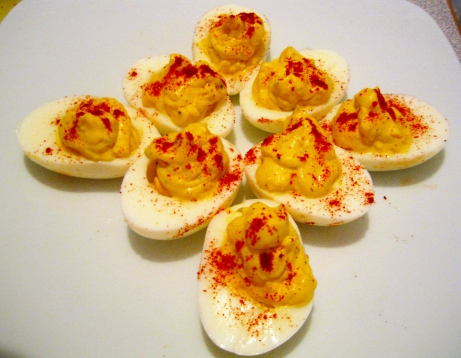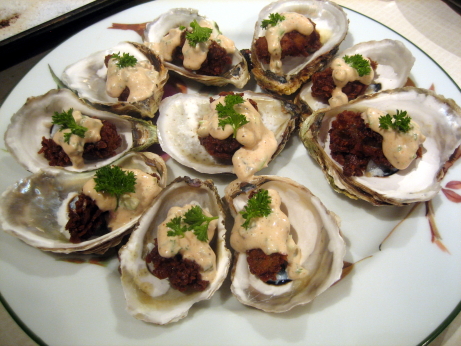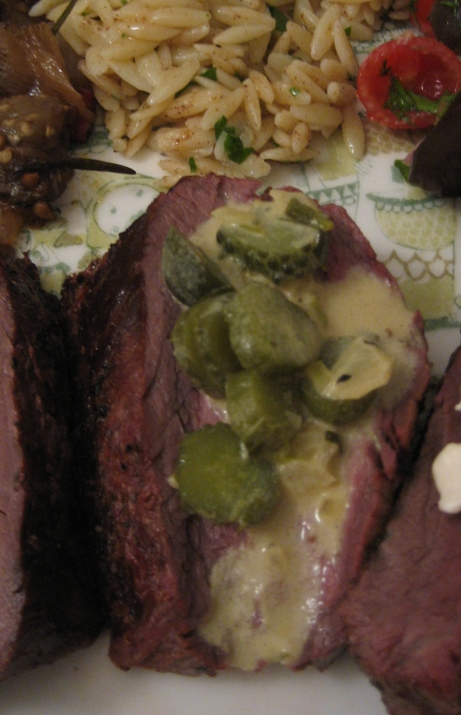The next few recipes are from a cocktail party we held in honour of a friend’s thesis defense. We invited her to celebrate her accomplishment, and be called Doctor a lot, at an intimate soirée at our place. I was planning a menu around her favourite dishes, and counting on eight to ten people. The day before the party, I was informed that it was going to be more like thirty, and possibly up to fifty people, and that I knew almost none of them. My first reaction was to start dusting.
Most of the time I’m pretty relaxed about the state of the apartment, and the mounting pile of dishes bothers me not at all. The second I hear that company’s coming though, I start channeling my mother. I worked myself up into a right state, gave up on the food, and decided that the best I could do would be to provide an empty and clean space for these hoards to descend upon. Then I thought that even if I wasn’t providing any food, I should really have ice, lemons, and limes on hand. From there I sold myself on baking a congratulatory cake, and decided reprising a couple of the great appetizers from The Project wouldn’t be too hard. The day of I convinced myself that adding a (soon to be blogged) dip would be in the realm of the reasonable. Once the guests had arrived I remembered that we had eggs in the fridge, and couldn’t think of a good reason not to devil them. I spent a good chunk of the evening in the kitchen cooking, but that worked out well as it wasn’t really my party. My dining companion and our newest doctor of philosophy entertained the twenty or so people who showed up, and I catered in the background.
This was a by the book deviled egg recipe, no fancy flourishes, just straight to business. First you hard boil a bunch of eggs, cool them, peel them, and halve them lengthwise, then you remove the yolks mash them up with mayo, Dijon, and cayenne, and pipe them back into the waiting egg whites. You may then garnish with smoked paprika and fresh chives.
Since this was a last minute hors d’oeuvre, I decided to skip the pretty star tip, and just pipe them with a ziplock minus a corner. Chives are lovely with deviled eggs, but the vegetable drawer had run dry, so no chives for you. All in all these were some pretty messy slapdash deviled eggs on my part, but they were devoured before anyone had a chance to notice. As is almost always the case with deviled eggs, they didn’t garner much praise, but they disappeared. If I’d asked people to tell me what they ate, they’d probably have forgotten to mention the eggs, but there was a peculiarly disappointed look that crossed the faces of our guests when they scanned the table and found the tray empty.
Are deviled eggs hopelessly outdated? probably, but who cares? They’re awesome, and I know I’m pleased to see a plate of these on a buffet table. The recipe was very standard, but totally solid. It’s very comforting to know that with a dozen eggs and a jar of mayonnaise I can put out a universal crowd pleaser with only slightly more effort than making an egg salad sandwich.


